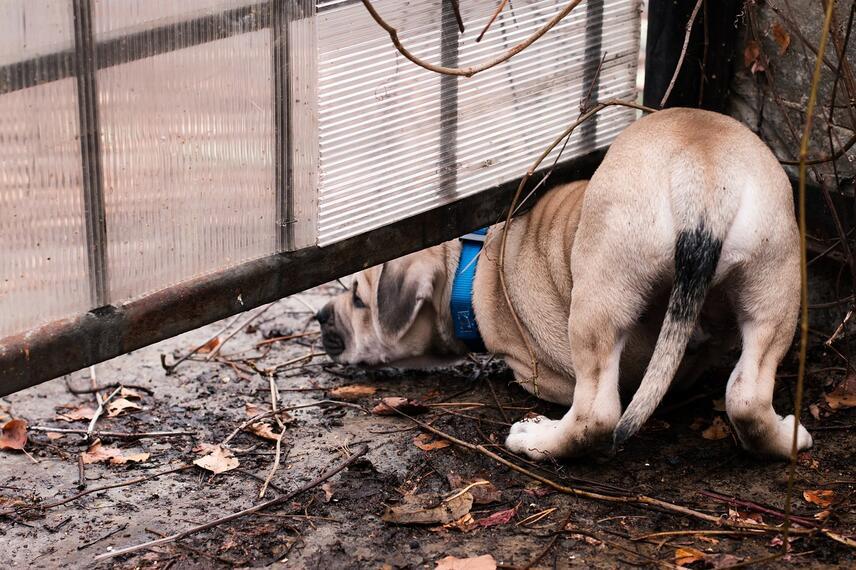The number of registered
animals is growing every day
Published: Apr 24, 2020

Sometimes, even though we have done everything we could and are very cautious, we fail to protect our pets from going missing or running away. This is sometimes a result of events beyond our control, a simple coincidence, but some cases could have been avoided had we had sufficient knowledge of the habits, mentality and behaviour of our animals. To prevent accidents from happening, it is good to know the types of situations in which pets most often run away and do everything you can to avoid them. The most common causes of pets going missing or running away are natural instincts, which can drown out any training, including your pet's sex drive, fear or anxiety caused by an unexpected event, hunting instincts, inquisitiveness and longing.
An animal scared by an attacker instinctively tries to run away. Panicking, it leaves its owner and loses eye contact with them. If it runs away in an unfamiliar place, it may have trouble finding its way back to its owner or home.
This applies to dogs which have trouble listening to calls, but some races are more susceptible to such behaviours than others, for example terriers. A dog's interest in another dog of the same breed is sometimes stronger that the word of its owner.
This is the most common cause of hunting breeds going missing – the hunting instinct can simply overpower learned behaviours.
This mostly applies to adolescent dogs which are still curious about the world, enjoy frolicking and need a lot of exercise, resulting in a combo which is much stronger that the owner's voice.
Panic can be caused by a sudden stimulus such as a loud noise, aggressive gesture or a vehicle speeding by out of nowhere. Dogs usually react by running away, even when on a leash, instinctively trying to leave the place they perceive as dangerous.
This factor usually accompanies the other causes mentioned here. If the collar is too loose or if the fastening on the suspenders is of poor quality, your pet could slip out of its harness.
Holes in the fence, a wall that is not high enough, or no security measures matching the size and ability of the cat or dog. If your pet runs around the property unsupervised, it is necessary to ensure that it is unable to jump over or tunnel under the fencing or escape the property or house in any other manner.
If there are females in heat nearby, males will be able to smell their scent from large distances, and even the most obedient dog or cat will be powerless against the biological drive to pass on its genes.
Leashed or not – it is never safe! It can be stolen, untied by someone out of sheer spite, attacked by another dog, or it can simply walk away on its own.
This applies to animals which have for some reason been separated from their owner who is temporarily away, has moved house, has gone missing, etc. This feeling can be so strong that it compels the animal to look for their owner.
Theft mostly applies to purebred dogs and cats or animals which resemble a pure breed. Such animals are most often stolen when on a walk or from the property they live on, where they are not always fully protected. A pet can also be unlawfully appropriated – this applies to cats and dogs which went missing but were found by someone else.
It is impossible to predict what will happen during the short life of your four-legged friend. This is why it is your duty to ensure that, should you fail to protect your dog from going missing, it can safely return home.



Marking animals with a microchip is the most durable, effective and completely safe method of quick and reliable identification. Every transponder (chip) has a unique number which enables instant identification of the animal and its owner, helping them reunite faster. However, it is important to remember that a chip is just a transponder with an encoded number. It is not a tracking device and contains no data about the animal or the owner! Therefore, in order to identify a chipped dog or cat, it is necessary that a microchip be registered in a national marked animal database...
Read moreIn today's world, responsibility for animal care has become not only a priority for their owners but also a societal issue. One of the most important tools in ensuring animal safety is the chip database. It allows for the quick and efficient recovery of lost pets, which is crucial for protecting their health and well-being.
The introduction of microchipping has significantly improved the effectiveness of efforts to locate lost animals, reducing stress for both owners and their four-legged friends. Registration in the chip database is increasingly required by local regulations, further highlighting the importance of this technology in ensuring comprehensive care for animals.